MULTIQUIP ST2010 Series User manual
- Category
- Water pumps
- Type
- User manual
This manual is also suitable for

OPERATION AND PARTS MANUAL
THIS MANUAL MUST ACCOMPANY THE EQUIPMENT AT ALL TIMES.
To find the latest revision of this
publication, visit our website at:
www.multiquip.com
MODEL ST2010 Series
SUBMERSIBLE PUMP
Revision #3 (12/07/12)

PAGE 2 —ST2010 SERIES SUBMERSIBLE PUMP • OPERATION AND PARTS MANUAL — REV. #3 (12/07/12)
TABLE OF CONTENTS
ST2010 Series
Submersible Pump
Parts Ordering Procedures ...................................... 3
Safety Information ................................................ 4-7
Specifications .......................................................... 8
Dimensions .............................................................. 9
General Information ............................................... 10
Components .......................................................... 11
Float Switches ....................................................... 12
Float Switch (Piggy-Back) ..................................... 13
Float Switch (Control Box) ................................ 14-15
Operation ............................................................... 16
Control Box Installation ..................................... 17-18
Clean-Up ............................................................... 19
Maintenance .......................................................... 20
Troubleshooting ..................................................... 21
Performance Curves .............................................. 22
Control Box Wiring Diagram ............................. 23-24
Motor Wiring Diagram ............................................ 25
Explanation Of Code In Remarks Column............. 26
Suggested Spare Parts ......................................... 27
Illustrations
ST010TCUL Pump Assy. .................................. 28-29
ST2010, ST2010A/B, ST2010CUL Pump Assy. ....30-33
Electric Motor Assy. .......................................... 34-35
Terms And Conditions Of Sale — Parts ................ 36
NOTICE
Specifications and part numbers are subject to change
without notice.

ST2010 SERIES SUBMERSIBLE PUMP • OPERATION AND PARTS MANUAL — REV. #3 (12/07/12) — PAGE 3
PARTS ORDERING PROCEDURES
www.multiquip.com
Ordering parts has never been easier!
Choose from three easy options:
WE ACCEPT ALL MAJOR CREDIT CARDS!
When ordering parts, please supply:
❒ Dealer Account Number
❒ Dealer Name and Address
❒ Shipping Address (if different than billing address)
❒ Return Fax Number
❒ Applicable Model Number
❒ Quantity, Part Number and Description of Each Part
❒ Specify Preferred Method of Shipment:
✓ UPS/Fed Ex ✓ DHL
■ Priority One ✓ Truck
■ Ground
■ Next Day
■ Second/Third Day
If you have an MQ Account, to obtain a Username
and Password, E-mail us at: parts@multiquip.
com.
To obtain an MQ Account, contact your
District Sales Manager for more information.
Order via Internet (Dealers Only):
Order parts on-line using Multiquip’s SmartEquip website!
■ View Parts Diagrams
■ Order Parts
■ Print Specifi cation Information
Note: Discounts Are Subject To Change
Goto www.multiquip.com and click on
Order Parts
to log in and save!
Use the internet and qualify for a 5% Discount
on Standard orders for all orders which include
complete part numbers.*
Order via Fax (Dealers Only):
All customers are welcome to order parts via Fax.
Domestic (US) Customers dial:
1-800-6-PARTS-7 (800-672-7877)
Fax your order in and qualify for a 2% Discount
on Standard orders for all orders which include
complete part numbers.*
Order via Phone:
Domestic (US) Dealers Call:
1-800-427-1244
Best Deal!
International Customers should contact
their local Multiquip Representatives for
Parts Ordering information.
Non-Dealer Customers:
Contact your local Multiquip Dealer for
parts or call 800-427-1244 for help in
locating a dealer near you.
Note: Discounts Are Subject To Change
Effective:
January 1
st
, 2006
NOTICE
All orders are treated as Standard Orders and will
ship the same day if received prior to 3PM PST.

PAGE 4 —ST2010 SERIES SUBMERSIBLE PUMP • OPERATION AND PARTS MANUAL — REV. #3 (12/07/12)
SAFETY INFORMATION
Do not operate or service the equipment before reading
the entire manual. Safety precautions should be followed
at all times when operating this equipment.
Failure to read and understand the safety
messages and operating instructions could
result in injury to yourself and others.
SAFETY MESSAGES
The four safety messages shown below will inform you
about potential hazards that could injure you or others. The
safety messages specifi cally address the level of exposure
to the operator and are preceded by one of four words:
DANGER, WARNING, CAUTION or NOTICE.
SAFETY SYMBOLS
DANGER
Indicates a hazardous situation which, if not avoided,
WILL result in DEATH or SERIOUS INJURY.
WARNING
Indicates a hazardous situation which, if not avoided,
COULD result in DEATH or SERIOUS INJURY.
CAUTION
Indicates a hazardous situation which, if not avoided,
COULD result in MINOR or MODERATE INJURY.
NOTICE
Addresses practices not related to personal injury.
Potential hazards associated with the operation of this
equipment will be referenced with hazard symbols which
may appear throughout this manual in conjunction with
safety messages.
Burn hazards
Symbol Safety Hazard
Electric shock hazards
Rotating parts hazards
Pressurized fluid hazards

ST2010 SERIES SUBMERSIBLE PUMP • OPERATION AND PARTS MANUAL — REV. #3 (12/07/12) — PAGE 5
SAFETY INFORMATION
GENERAL SAFETY
CAUTION
NEVER operate this equipment without proper protective
clothing, shatterproof glasses, respiratory protection,
hearing protection, steel-toed boots and other protective
devices required by the job or city and state regulations.
Avoid wearing jewelry or loose fi tting clothes that may
snag on the controls or moving parts as this can cause
serious injury.
NEVER operate this equipment when not
feeling well due to fatigue, illness or when
under medication.
NEVER operate this equipment under the
infl uence of drugs or alcohol.
ALWAYS clear the work area of any debris, tools, etc.
that would constitute a hazard while the equipment is
in operation.
No one other than the operator is to be in the working
area when the equipment is in operation.
DO NOT use the equipment for any purpose other than
its intended purposes or applications.
NOTICE
This equipment should only be operated by trained and
qualifi ed personnel 18 years of age and older.
Whenever necessary, replace nameplate, operation and
safety decals when they become diffi cult read.
Manufacturer does not assume responsibility for any
accident due to equipment modifi cations. Unauthorized
equipment modifi cation will void all warranties.
NEVER use accessories or attachments that are not
recommended by Multiquip for this equipment. Damage
to the equipment and/or injury to user may result.
ALWAYS know the location of the nearest
fi re extinguisher.
ALWAYS know the location of the nearest
fi rst aid kit.
ALWAYS know the location of the nearest phone or
keep
a phone on the job site.
Also, know the phone numbers
of the nearest ambulance, doctor and
fi re department.
This information will be invaluable in case of an
emergency.

PAGE 6 —ST2010 SERIES SUBMERSIBLE PUMP • OPERATION AND PARTS MANUAL — REV. #3 (12/07/12)
SAFETY INFORMATION
PUMP SAFETY
DANGER
NEVER operate the equipment in an explosive
atmosphere or near combustible materials. An
explosion or fi re could result causing severe
bodily harm or even death.
WARNING
Accidental starting can cause severe injury
or death. ALWAYS place the ON/OFF
switch in the OFF position.
DO NOT place hands or fingers inside
pump when pump is running.
NEVER disconnect any emergency or
safety devices. These devices are intended for operator
safety. Disconnection of these devices can cause severe
injury, bodily harm or even death. Disconnection of any
of these devices will void all warranties.
Risk of Electric Shock - This pump has not been
investigated for use in swimming pool or marine areas.
CAUTION
DO NOT restrict the fl ow of the discharge hose as it may
cause the pump to overheat.
Be careful of discharge hose whipping under pressure.
ALWAYS check pump oil level only when pump is cool.
Expansion due to heat may cause hot oil to spray from
the oil plug when the oil plug is removed. The possibility
of severe scalding may exist.
NOTICE
ALWAYS place the pump in an upright position on a
platform before using. The platform will prevent the pump
from burrowing itself on soft sand or mud.
NEVER operate pump on its side.
DO NOT allow the pump to freeze in water.
NEVER leave an open pump chamber unattended.
ALWAYS keep the machine in proper running condition.
DO NOT attempt to thaw out a frozen pump by using
a torch or other source of fl ame. Application of heat in
this manner may heat the oil in the seal cavity above the
critical point, causing pump damage.
DO NOT pump water with a temperature greater than
104°F.
DO NOT pump liquids containing acid or alkali.
ALWAYS check strainer before pumping. Make sure
strainer is not clogged. Remove any large objects, dirt
or debris from the strainer to prevent clogging.
ALWAYS use a large basket strainer when pumping
water that contains large debris.
ALWAYS fl ush pump (clean) after use when pumping
water concentrated with heavy debris. It is very important
to always fl ush the pump before turning it off to prevent
clogging.
Fix damage to machine and replace any broken parts
immediately.
ALWAYS
store equipment properly when it is not being
used. Equipment should be stored in a clean, dry location
out of the reach of children and unauthorized personnel.
NEVER lubricate components or attempt service on a
running machine.
NEVER run pump dry.
ALWAYS
allow the machine a proper amount of time to
cool before servicing.
Keep machine in proper running condition.
ELECTRICAL SAFETY
DANGER
The electrical voltage required to operate
pump can cause severe injury or even death
through physical contact with live circuits.
ALWAYS disconnect electrical power from
pump before performing maintenance on
pump.
WARNING
To reduce the risk of electric shock, connect only to a
circuit protected by a Ground-Fault Circuit-Interrupter
(GFCI).

ST2010 SERIES SUBMERSIBLE PUMP • OPERATION AND PARTS MANUAL — REV. #3 (12/07/12) — PAGE 7
SAFETY INFORMATION
NOTICE
ALWAYS make certain that the voltage supplied to the
pump is correct. Always read the pump’s nameplate to
determine what the power requirements are.
Power Cord/Cable Safety
DANGER
NEVER let power cords or cables lay in water.
NEVER stand in water while AC power cord is connected
to a live power source.
NEVER use damaged or worn cables or cords. Inspect
for cuts in the insulation.
NEVER grab or touch a live power
cord or cable with wet hands. The
possibility exists of electrical shock,
electrocution or death.
Make sure power cables are securely connected to the
motor's output receptacles. Incorrect connections may
cause electrical shock and damage to the motor.
WARNING
NEVER attempt to use the power cord as a lifting or
lowering device for the pump.
NOTICE
ALWAYS make certain that proper power or extension
cord has been selected for the job. See Cable Selection
Chart in this manual.
Grounding Safety
DANGER
ALWAYS make sure pump is grounded.
NEVER use gas piping as an electrical ground.
ALWAYS make sure that electrical circuits are properly
grounded to a suitable earth ground (ground rod) per
the National Electrical Code (NEC) and local codes
before operating generator. Severe injury or death by
electrocution can result from operating an ungrounded
motor.
This pump is supplied with a grounding conductor and
grounding-type attachment plug. To reduce the risk of
electric shock, connect only to a properly grounded,
grounding-type receptacle.
Control Box Safety
DANGER
ALWAYS
have a qualifi ed electrician perform the control
box installation. The possibility exists of electrical shock
or electrocution.
NOTICE
ALWAYS mount control box in a vertical position
protected from harsh environmental elements.
LIFTING SAFETY
CAUTION
When raising or lowering of the pump is required, always
attach an adequate rope or lifting device to the correct
lifting point (handle) on the pump.
NOTICE
DO NOT lift machine to unnecessary heights.
NEVER lift the equipment while the electric motor is
running.
TRANSPORTING SAFETY
NOTICE
ALWAYS shut down pump before transporting.
ALWAYS tie down equipment during transport by
securing the equipment with rope.
ENVIRONMENTAL SAFETY/DECOMMISSIONING
CE
DO NOT pour waste or oil directly onto
the ground, down a drain or into any water
source.
Contact your country's Department of Public
Works or recycling agency in your area and arrange for
proper disposal of any electrical components, waste or
oil associated with this equipment.
When the life cycle of this equipment is over it is
recommended that the pump casing and all other metal
parts be sent to a recycling center.
Metal recycling involves the collection of metal from
discarded products and its transformation into raw
materials to use in manufacturing a new product.
Recyclers and manufacturers alike promote the process
of recycling metal. Using a metal recycling center
promotes energy cost savings.

PAGE 8 —ST2010 SERIES SUBMERSIBLE PUMP • OPERATION AND PARTS MANUAL — REV. #3 (12/07/12)
SPECIFICATIONS
Table 1. Specifications
Model
ST-2010/ST-2010A/
ST-2010CUL
ST-2010B ST-2010TCUL
Type Submersible Pump Submersible Pump Submersible Trash Pump
Impeller Cast Ductile Iron Cast Ductile Iron Cast Ductile Iron
Discharge Size 2.00 in. (51 mm) 2.00 in. (51 mm) 2.00 in. (51 mm)
Maximum Pumping
Capacity
85 gallons/minute
(322 liters/minute)
85 gallons/minute
(322 liters/minute)
90 gallons/minute
(341 liters/minute)
Max. Solids Diameter --- --- 1.00 in. (25 mm.)
Max Head
54.7 ft. (16.6 meters)
ST-2010CUL: 50 ft. (15.24 m)
54.7 ft. (16.6 meters) 45 ft. (13.7 meters)
Power 1.0 HP (0.75 kw) 1.0 HP (0.75 kw) 1.0 HP (0.75 kw)
Voltage; Phase 1Ø 115V 1Ø 230V 1Ø 115V
Starting Amps 63 A 30 A 53 A
Running Amps
ST2010: 13.5 A
ST2010A: 13.5 A
ST2010CUL: 11.9A
6.7 A 9.4 A
Control Box (see Note 3) CB3 CB6 CB3
Thermal Overlaod
Protection
YES YES YES
Rotation CCW (Note 1) CCW (Note 1) CCW (Note 1)
Mechanical Oil seal
Capacity
150 cc. (Note 2) 150 cc. (Note 2) 180 cc. (Note 2)
Check Frequency Monthly (300 hrs.) Monthly (300 hrs.) Monthly (300 hrs.)
RMP (Speed) 3550 +/- 30 3550 +/- 30 3550 +/- 30
Power Cable Length 50 ft. (15.2 meters) 50 ft. (15.2 meters) 50 ft. (15.2 meters)
Dry Net weight 55 lbs. (25 Kg.) 55 lbs. (25 Kg.) 77 lbs. (35 Kg.)
1.
Motor Rotation – Upon start-up, the pump "kicks" in the opposite direction of motor rotation. The correct rotation is counterclockwise (CCW) as viewed from
the impeller end of the pump.
2. Mechanical Oil Seal – Use a good grade 10 weight non-detergent hydraulic oil (i.e. Shell Turbo 32 or equivalent). Fill oil cavity 75% to 85% full (allow air
space for expansion).
3. Control Box - Control box (Table 2) may be required for certain pumping applications.
Table 2. Control Box Specifications
Model No. Voltage Type UL/CSA Listed
Thermal
Overload
Protection
Float Switch
Capability
CB3 115 VAC, 60 Hz Single-Phase YES YES YES
CB6 230 VAC, 60 Hz Single-Phase YES YES YES

ST2010 SERIES SUBMERSIBLE PUMP • OPERATION AND PARTS MANUAL — REV. #3 (12/07/12) — PAGE 9
DIMENSIONS
ST2010TCUL
ST2010, ST2010A, ST2010B, ST2010CUL
Figure 1. ST2010 Series Dimensions
23.82 in.
(605 mm.)
10.23 in.
(260 mm.)
3.14 in.
(80 mm.)
5.11 in.
(130 mm.)
NPT 2
4.52 in.
(115 mm.)
3.54 in.
(90 mm.)
7.08 in.
(180 mm.)
4.37 in.
(111 mm.)
49.21 ft.
(15 m)
16.46 in
(418 mm)
6.7 in
(170 mm) Dia.
49.21 ft
(15m)

PAGE 10 —ST2010 SERIES SUBMERSIBLE PUMP • OPERATION AND PARTS MANUAL — REV. #3 (12/07/12)
GENERAL INFORMATION
INTRODUCTION
The Multiquip Model ST-2010 submersible pump is
designed to pump water and is used for the draining (de-
watering) of well casings construction sites, cofferdams,
manholes, transformer vaults and excavations. The ST-
2010TCUL is designed for heavily debris-laden water and
the 2-inch discharge port can handle solids up to one inch
in diameter.
A cast ductile iron type impeller is attached to the output
shaft of a 1 HP electric motor which provides adequate
power for general purpose pumping. This submersible
pump is supplied complete with an electric power cable,
and a discharge port which accepts a 2-inch hose.
This pump is ideal for portability because of its light
weight and carrying handle. For reliability and long life, a
mechanical seal provides shaft sealing, with an oil chamber
separating the pump section from the motor.
The pump when in use, should be installed as free standing
(upright position) on its strainer base. A 2-inch discharge
hose (not supplied) should be connected to the discharge
port. The discharge hose should be adequately supported
to avoid stress on the pump.
For maximum water flow, the discharge hose should be
kept as short as possible, and with minimum elevation
above the pump. Remember as the length and/or height
of the discharge hose is increased, the flow of water will
be reduced. Also any reduction in the hose size, and any
fittings such as valves or outlet nozzles, will restrict the
water flow.
To avoid back-siphonage when the pump is switched off,
ensure that the end of the discharge hose is installed above
the water level at the final discharge point.
When the pump is switched off, the water remaining in the
hose will run back through the pump. This can be avoided
by placing a non-return valve in the hose nearest the pump.
NEVER use this submersible pump to pump flammable
liquids or operate in a explosive or flammable environment.
Avoid using this pump in conditions where mud, grit, silt
or other debris are present. These conditions could cause
blockage and cause excessive pump wear.
DO NOT install the pump directly into an area where there
is a heavy build-up of mud, grit, silt or debris. If this condition
is present, install the pump on a platform before operating.
This pump must always be positioned on a platform in an
upright position. NEVER operate the pump by a suspended
rope. To prevent large solids from entering the pump, install
a wire mesh screen or similar barrier around the pump.
If the pump was used to pump water containing mud, silt,
use clean water to flush out the pump after each use.
DO NOT allow the pump to run dry, as this will damage the
pump. During maintenance, dry running is permissible but
only for a few seconds.
NEVER lift the pump by its electrical power cord. ALWAYS
lift the pump by its carrying handle or attach a rope to the
carrying handle.
A pump fully submerged in liquid will not freeze, unless
the liquid freezes. DO NOT allow a partially submerged
pump to freeze. The expansion of water freezing in the
volute may crack the pump, causing expensive repairs. If
there is any danger of the pump being subjected to freezing
temperatures, Lift the pump from water and allow it to drain
thoroughly.
If the pump jams or the pump rotor locks for any reason,
disconnect the pump from the power source immediately.
Allowing the pump motor to cycle ON and OFF under an
overload condition can burn out the motor.
When replacement of nuts and bolts is required, use only
recommended parts as referenced in the parts section of
this manual. This pump uses metric threads. DO NOT use
English measurement threads.
Failure to follow the above referenced precautions could
result in serious injury or death! Replace pump cord
immediately if cord becomes damaged or severed. This
pump must be installed in accordance with National Electric
Code ANSI/NFPA 70 so as to prevent moisture from
entering or accumulating with the boxes, conduit bodies
fittings, float housing or cable.
WARNING
Explosion or Fire Hazard exists if this
pump is used with flammable liquids. DO
NOT use this pump with flammable liquids.
DO NOT install this pump in hazardous
locations as defined by the National
Electrical Code, ANSI/NFPA 70.

ST2010 SERIES SUBMERSIBLE PUMP • OPERATION AND PARTS MANUAL — REV. #3 (12/07/12) — PAGE 11
COMPONENTS
ST2010, ST2010A, ST2010B, ST2010CUL ST2010TCUL
6
5
2
3
1
4
7
8
9
Figure 2. Submersible Pump Components
Figure 2 shows the location of the basic components for
the ST2010 series submersible pumps. Listed below is a
brief description of each component.
1. Strainer Base — Made of chrome-plated steel which
is resistant to hardware corrosion. DO NOT pump
large objects or debris with this pump. This pump is
for pumping water only. Always place the strainer base
on a platform.
2. Volute/Impeller — Volute is constructed of cast iron
and impeller is made of cast ductile iron to minimize
wear and prolong service life.
3. Electric Motor — All ST2010 series submersible
pumps utilize a 60 Hz, single-phase, 1.0 HP electric
motor. The ST2010, ST2010A, ST2010CUL and
S-2010TCUL operate at 115 VAC while the ST2010B
operates at 230VAC. Consult with a licensed electrician
before connecting motor to a power source. Observe
all city and local safety codes.
4. Discharge Port — Connect a 2-inch hose to this port.
Remember to adequately support the discharge hose
to avoid stress on the pump.
5. AC Power Cable — This unit is supplied with an AC
power cable. Always check the cable for signs of wear.
NEVER use a defective power cable. Replace the cable
immediately if the cable is worn or defective.
6. Carrying Handle — Always carry the submersible
pump by its handle. NEVER carry the pump by its
power cord. Carrying or lifting the pump by the power
cord will cause undue stress on the cord and ultimately
the cord will become dislodged from the pump.
7. Thermal Overload Protection — This pump is
equipped with thermal overload protection device that
will shut down the motor in the event of high operating
temperatures. The motor will automatically restart once
the temperature returns to an acceptable operating
temperature.
8. Mechanical Oil Seal — This oil-filled seal provides
lubrication when running the pump dry. NEVER run
the pump dry. Running the pump dry will cause severe
damage to the pump.
9. Mechanical Oil Seal Plug — Remove this plug to
check and add hydraulic oil (Shell 32 or equivalent)
to the oil cavity. This oil protects the mechanical seal.
Oil cavity should be full enough to cover seal spring.

PAGE 12 —ST2010 SERIES SUBMERSIBLE PUMP • OPERATION AND PARTS MANUAL — REV. #3 (12/07/12)
FLOAT SWITCHES
FLOAT SWITCH THEORY
Mercury monitoring is a mercury-switch actuated, liquid-
level control that has proven to be more economical
and longer lasting than other types of liquid-level control
systems, easily replacing and improving upon diaphragm
switches, air bubble systems and electro-mechanical
switches most often relied upon in the past.
HOW IT WORKS
There is a tilt-sensitive mercury switch hermetically sealed
within each float. As the liquid level (water) rises or falls,
the float changes its angle until the mercury switch makes
(closed, Figure 4) or breaks (open, Figure 5) the circuit.
Maximum pumping range is 120 degrees. See Figure 3
below.
Figure 3. Pumping Range (Float Switch)
PUMPING RANGE
The pumping range of the pump is determined by the float
switch tether cord. Use Table 3 as guide line to determine
your required pumping range. Pumping ranges are based
on non-turbulent conditions. Range may vary due to water
temperature and cord shape. Please note as the tether
length increases, so does the variance of the pumping
range.
DESIGN FEATURES
Constructed of rigid, durable ABS polymer ultrasonically
welded. The all-steel mercury switch is held by positioning
pins. Interior is filled with cell foam.
Suitable for most liquid environments.
Hermetically sealed.
Thick-walled non-corrosive PVC plastic enclosure.
Pressure tested to 60 ft. (18.2 meters).
Mercury switch reliability, proven to 500,000 cycles.
Standard SJO, 16-gauge, 2 conductor cord (20 ft./6.09 m).
Figure 4. Float Switch (Closed)
Figure 5. Float Switcfh (Open)
Table 3. Pumping Range
Tether Length
2 in.
5.08 cm.
4 in.
10.16 cm.
6 in.
15.24 cm.
8 in.
20.32 cm.
10 in.
25.4 cm.
12 in.
30.48 cm.
14 in.
35.56 cm.
16 in.
40.64 cm.
Pumping Range
6 in.
15.24 cm.
10 in.
25.4 cm.
14 in.
35.56 cm.
18 in.
45.72 cm.
22 in.
55.88 cm.
27 in.
68.58 cm.
31 in.
78.74 cm.
35 in.
88.9 cm.

ST2010 SERIES SUBMERSIBLE PUMP • OPERATION AND PARTS MANUAL — REV. #3 (12/07/12) — PAGE 13
FLOAT SWITCH (PIGGY-BACK)
FLOAT SWITCH
Single or dual control float switches (Figure 6) can be used
for the unattended operation of the submersible pump.
When using the piggy-back power configuration (plug),
the ST-2010 series pumps DO NOT require the use of a
control box. In this configuration (piggy-back), the SW-1
(single float switch) or SW-2 (dual float switch) are required.
The illustration below is an example of a single float switch
application.
Mounting The Float Switch
1. Determine the required cord tether length as shown in
Figure 6 and Table 3.
2. Place the cord into the clamp as shown in Figure 6
3. Secure the clamp to the discharge hose as shown in
Figure 6. DO NOT install cord under hose clamp.
4. Using a screwdriver, tighten the hose clamp. DO NOT
over- tighten. Make sure the float cord is not allowed
to touch the excess hose clamp band during operation.
NOTICE
Figure 6 shows a single float switch application. For
dual float switch capability use a Model SW-2 mercury
type float switch.
Figure 6. Single Float Switch Application Diagram

PAGE 14 —ST2010 SERIES SUBMERSIBLE PUMP • OPERATION AND PARTS MANUAL — REV. #3 (12/07/12)
FLOAT SWITCH (CONTROL BOX)
CONTROL BOX
For special remote pumping applications of the submersible
pump, a control box (Model CB3 - for ST2010, ST2010A,
ST2010CUL, and ST2010TCUL and Model CB6 - for
ST2010B) may be required. This water-resistant control box
provides watertight housing and glands to prevent water
from leaking into the box, and a float switch interface. When
using the CB3 control box, only the SW-1WOP float switch
(2) can be used (no plug, bare wires).
Figure 7. CB3 Control Box abd Dual Float Switch Application Diagram

ST2010 SERIES SUBMERSIBLE PUMP • OPERATION AND PARTS MANUAL — REV. #3 (12/07/12) — PAGE 15
FLOAT SWITCH (CONTROL BOX)
Figure 8. CB6 Control Box and Dual Float Switch Application Diagram

PAGE 16 —ST2010 SERIES SUBMERSIBLE PUMP • OPERATION AND PARTS MANUAL — REV. #3 (12/07/12)
OPERATION
HOSE CONNECTIONS
Connect a 2-inch hose to the discharge port on the pump
as shown in Figure 9. Make sure that the hose is attached
correctly to the discharge port.
PUMP POWER CONNECTIONS
(PIGGY-BACK CORD ONLY)
1. Make sure the circuit breaker supplying power to the
pump is in the OFF position.
2. Connect the float switch or switches to the AC power
receptacle as shown in Figure 6.
ATTACHING LIFTING ROPE
1. Attach a suitable lifting cable (rope) to the carrying
handle (Figure 9) on the pump and lower the pump
into place. For applications where there is an excessive
amount of mud, grit or silt, the use of a support platform
is desirable. When pumping water from swimming pool
type applications where there is little or no debris, the
support platform is not required.
Figure 9. Submersible Pump Upright
(Correct Position)
2. Make sure the pump is always placed in an upright
position, not tilted (Figure 10). Never position the pump
directly on a soft, loose bottom. Remember to attain
maximum pumping capacity and prevent excessive
wear, position the pump so it will not burrow itself into
sand or clay.
Figure 10. Submersible Pump Tilted
(Incorrect Position)
3. If all of the pump's electrical requirements have been
met, place the circuit breaker or power ON/OFF switch
in the ON position.
4. Wait a few seconds and water should begin to flow
from the discharge hose.
5. If water is not flowing from the discharge hose or not
flowing freely after a few minutes, remove the power
from the pump and check the system for leaks.
6. To stop the pump from pumping, place the circuit
breaker or ON/OFF switch in the OFF position.
Figure 11. Power Cord (Wet Hands)
DANGER
NEVER grab or touch a live power cord (Figure 11).
DO NOT stand in water when connecting the pump's
power cord into a voltage source. The possibility exists
of electrical shock, electrocution and possibly death!
POWER
CORD
(POWER ON)
WET
HANDS

ST2010 SERIES SUBMERSIBLE PUMP • OPERATION AND PARTS MANUAL — REV. #3 (12/07/12) — PAGE 17
CONTROL BOX INSTALLATION
CONTROL BOX MOUNTING
Mount the control box in an upright vertical position. Make
sure the control box is securely fastened to a flat surface,
that is free of dust, dirt, moisture or any elements that
may contaminate or erode the electronic components of
the control box.
SINGLE-PHASE POWER INSTALLATION (INPUT)
The ST2010, ST2010A, ST2010CUL, and ST2010TCUL
submersible pumps require 115 V, 60 Hz, single-phase
power for normal operation. The ST2010B requires 230 V,
60 Hz, single-phase power.
If you cannot determine what your pump's power
requirements are, look at the vendor supplied identification
name tag attached to the pump or contact Multiquip's
Service/Technical Assistance department.
DANGER
The ST2010 Series submersible
pumps are designed to work with a
control box. The control box contains
the necessary electronics (float
switch connections) to operate
the pump. Remember the control
box contains hazardous voltages.
Disconnect all sources of power
before installing or servicing. There exists the possibility
of electrocution, electric shock or burn, which can cause
severe bodily harm or even death!
CAUTION
This control box should only be installed or serviced by
a licensed electrician or qualified personnel.
CAUTION
Applying incorrect power (voltage phasing) to the
submersible pump can cause severe damage to the
pump. Please make sure that the correct voltage and
phase are transferred to the pump at all times.
POWER CORD REQUIREMENTS
When routing the 115 VAC/230V, 60 Hz, single-phase power
via a power cord to the control box, always use the correct
wire size. Please refer to Table 4 below (Cord Length/Wire
Size) to determine the correct wire size. Incorrect wire size
can adversely affect the performance of the pump.
CONNECTING DUAL FLOAT SWITCH (SW-1WOP)
TO CONTROL BOX
1. Remove the float switch input connector housing, then
route the float switch wires through the cable gland on
the control box. Attach the wires of the float switch to
the terminal block as indicated by Table 5, Figure 7
and Figure 8.
2. Tighten the connector housing to ensure a tight fit
between the cord and the connector body. This will
prevent the cable from pulling out of the terminal block
and also prevent moisture from entering the control box.
3. Determine the length of the float switch wires, then
secure float switch wires to pump discharge hose. See
Figure 3 and Table 3 to determine the pumping range.
Table 4. Cord Length and Wire Size
AMPS 50 FT. 100 FT. 150 FT.
6 16 AWG 16 AWG 14 AWG
8 16 AWG 14 AWG 12 AWG
10 16 AWG 14 AWG 12 AWG
12 14 AWG 14 AWG 12 AWG
14 14 AWG 12 AWG 10 AWG
16 12 AWG 12 AWG 10 AWG
Table 5. Float Switch Connections
Float Switch Terminal Block Number
START
TERMINAL 1 (BLACK)
TERMINAL 2 (WHITE)
STOP
TERMINAL 7 WHITE)
TERMINAL 8 (BLACK))

PAGE 18 —ST2010 SERIES SUBMERSIBLE PUMP • OPERATION AND PARTS MANUAL — REV. #3 (12/07/12)
CONNECTING AC POWER TO THE CONTROL BOX
1. The AC power cord (input) should have three wires.
Each wire is color coded. The colors are WHITE,
BLACK and GREEN.
2. Remove the AC input connector housing from the
control box, then route the power cord through the
cable gland on the control box.
3. Connect the AC power cord to the contactor as shown
in Figure 7 and Table 6.
4. Tighten the connector housing to ensure a tight fit
between the power cord and the connector body. This
will prevent the cable from pulling out of the terminal
block and also prevent moisture from entering the
control box.
5. Connect the other end of the AC power cord to the
voltage source. Remember to provide a means of
disconnecting the power from the control box (circuit
breaker or quick disconnect switch). Also make sure to
provide a good earth ground to the control box.
CONNECTING AC POWER TO THE PUMP
1. AC power is transferred to the pump via a contactor.
The coil of the contactor is energized or de-energized
by the opening and closing of the float switch contacts.
The power cord should have three wires. Each wire
is color coded. The colors are WHITE, BLACK and
GREEN.
Table 6. AC Input Power Connections
to Contactor
Float Switch Terminal Block Number
BLACK L1
WHITE L2
GREEN GROUND
NOTICE
It is recommended that the power being supplied to the
control box always be connected to a circuit breaker
or a quick disconnect switch. This safety feature allows
for quick removal of power from the control box in the
event of an emergency.
CONTROL BOX INSTALLATION
2. Remove the pump AC input connector housing from
the control box, then route the power cord through the
cable gland on the control box.
3. Connect the pump power cord to the contactor as
shown in Figure 7 and Table 7.
TURNING ON THE PUMP
1. If all of the pump's electrical requirements have been
met, place the circuit breaker or power ON/OFF switch
in the ON position.
2. The CB3 control box has an operation switch located
on the front cover. This switch has 3 positions; AUTO,
MANUAL and OFF. The AUTO position allows the
pump to run in an unattended mode. The MANUAL
position will let the pump run without the float switches
controlling the pump. When in the manual mode, be
careful not to let the pump run dry. Severe damage to
the pump may occur if it is allowed to run dry.
3. Place the operation switch in the AUTO position. The
AC power indicator lamp should be lit (ON).
4. Wait a few seconds and water should begin to flow
from the discharge hose.
5. If water is not flowing from the discharge hose or not
flowing freely after a few minutes, remove the power
from the pump and check the system for leaks.
6. To stop the pump from pumping, place the operation
switch in the OFF position.
Table 7. AC Output Power Connections
to Pump
Cable Wire Color Contactor
BLACK T1
WHITE T2
GREEN GROUND
NOTICE
Electrical connections to the power source should only
be performed by a licensed electrician or qualified
personnel.

ST2010 SERIES SUBMERSIBLE PUMP • OPERATION AND PARTS MANUAL — REV. #3 (12/07/12) — PAGE 19
PUMP SHUT-DOWN/CLEAN-UP
1. Remove the power from the pump by turning off the
circuit breaker or switch that provides power to the
pump. Remember to make sure that hands are dry (not
wet), and feet are not standing in water when removing
disconnecting power from the pump.
2. Using the lifting rope, lift the pump up from its current
position. Remove the discharge hose from the
discharge port on the pump.
3. Remove all power cables and float switches from
the control box. Place cables and float switches in a
suitable container where they will not get damaged.
4. If the pump was used to pump mud, grit or silt, flush
vigorously with clean water.
5. Remove the pump from the water. Wipe off any mud
or debris that might have attached itself to the pump.
6. Store pump in a clean dry place away from dirt and
debris.
CLEAN-UP

PAGE 20 —ST2010 SERIES SUBMERSIBLE PUMP • OPERATION AND PARTS MANUAL — REV. #3 (12/07/12)
MAINTENANCE
LUBRICATION
To check the oil level of the mechanical seal perform the
following:
1. Lay the pump (Figure 12) on its side with the oil plug
facing upwards.
2. Remove oil fill plug.
3. Visually inspect oil plug hole to verify that oil cavity
is full enough to cover seal spring. Check every 300
hours. Change hydraulic oil every 6 months (1,000
hours) or as needed.
4. While checking the hydraulic oil level, also check the
condition of the hydraulic oil in the seal cavity. Block the
opening with a finger and roll pump to one side to drain
oil into a small transparent container. If oil is cloudy or
has water in it, drain oil from pump cavity and replace
hydraulic oil. Check the seal for wear damage.
5. If oil level is low, fill with SAE 10 weight non-detergent
hydraulic oil (i.e. Shell Turbo 32 or equivalent). Fill oil
cavity 75% to 85% full (allow air space for expansion).
See Table 1 for pump oil cavity capacity.
IMPELLER
1. Make sure the clearance between the impeller and
the friction disk is approximately .012 - .020 inches
(.304 - .508 mm.)
2. If impeller is defective or badly worn, replace impeller
immediately.
Figure 12. Checking Hydraulic Oil
OIL FILL
PLUG
FILL TO 75-80% CAPACITY
SEE TABLE 1 FOR FILLING
CAPACITY.
LAY PUMP FLAT
ON ITS SIDE
FILL WITH 10 WEIGHT NON-
DETERGENT HYDRAULIC
OIL. USE SHELL TURBO 32
OR EQUIVALENT.
REMOVE FILL PLUG, AND
VISUALLY INSPECT THAT
OIL CAVITY IS FULL ENOUGH
TO COVER SEAL SPRING.
CHECK HYDRAULIC OIL
EVERY 300 HOURS. CHANGE
EVERY 6 MONTHS OR AS
NEEDED.
DISCOLORATION OF OIL
(MILKY)INDICATES A LEAKING
PUMP WATER SEAL.
SUBMERSIBLE
PUMP
Page is loading ...
Page is loading ...
Page is loading ...
Page is loading ...
Page is loading ...
Page is loading ...
Page is loading ...
Page is loading ...
Page is loading ...
Page is loading ...
Page is loading ...
Page is loading ...
Page is loading ...
Page is loading ...
Page is loading ...
Page is loading ...
Page is loading ...
Page is loading ...
-
 1
1
-
 2
2
-
 3
3
-
 4
4
-
 5
5
-
 6
6
-
 7
7
-
 8
8
-
 9
9
-
 10
10
-
 11
11
-
 12
12
-
 13
13
-
 14
14
-
 15
15
-
 16
16
-
 17
17
-
 18
18
-
 19
19
-
 20
20
-
 21
21
-
 22
22
-
 23
23
-
 24
24
-
 25
25
-
 26
26
-
 27
27
-
 28
28
-
 29
29
-
 30
30
-
 31
31
-
 32
32
-
 33
33
-
 34
34
-
 35
35
-
 36
36
-
 37
37
-
 38
38
MULTIQUIP ST2010 Series User manual
- Category
- Water pumps
- Type
- User manual
- This manual is also suitable for
Ask a question and I''ll find the answer in the document
Finding information in a document is now easier with AI
Related papers
-
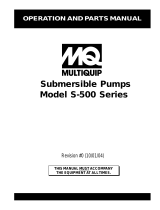 MQ Multiquip S-500 User manual
MQ Multiquip S-500 User manual
-
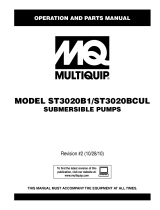 MULTIQUIP st3020b1 User manual
MULTIQUIP st3020b1 User manual
-
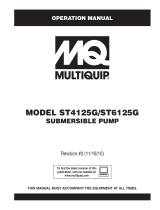 MQ Multiquip ST4125G User manual
MQ Multiquip ST4125G User manual
-
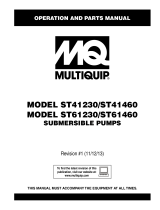 MULTIQUIP ST41230 User manual
MULTIQUIP ST41230 User manual
-
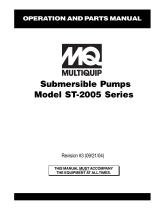 MQ Multiquip ST-2005 User manual
MQ Multiquip ST-2005 User manual
-
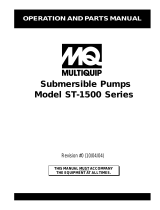 MQ Multiquip ST-1500 User manual
MQ Multiquip ST-1500 User manual
-
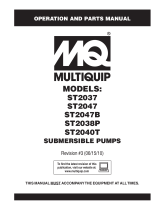 MULTIQUIP ST204B User manual
MULTIQUIP ST204B User manual
-
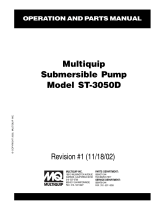 MULTIQUIP ST-3050D User manual
MULTIQUIP ST-3050D User manual
-
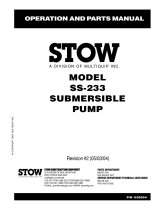 MQ Multiquip STOW-SS233 User manual
MQ Multiquip STOW-SS233 User manual
-
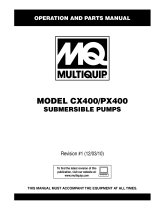 MULTIQUIP CX400 User manual
MULTIQUIP CX400 User manual
Other documents
-
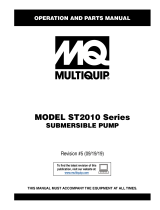 MQ Multiquip ST2010-Series Operating instructions
MQ Multiquip ST2010-Series Operating instructions
-
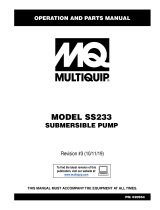 MQ Multiquip MQ-SS233 Operating instructions
MQ Multiquip MQ-SS233 Operating instructions
-
Everbilt HDPS33W User guide
-
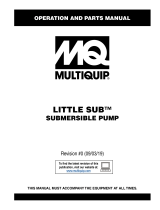 MQ Multiquip Little-Sub Operating instructions
MQ Multiquip Little-Sub Operating instructions
-
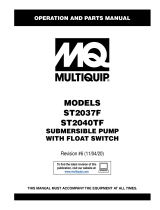 MQ Multiquip ST2037F-ST2040TF Operating instructions
MQ Multiquip ST2037F-ST2040TF Operating instructions
-
Novus 961+0409+000 Datasheet
-
Novus 2.8 TSS 445mm Datasheet
-
Novus 961+2709+000 Datasheet
-
Everbilt SUP80-HD FAQ
-
Blue Wave NW2350 User manual



















































